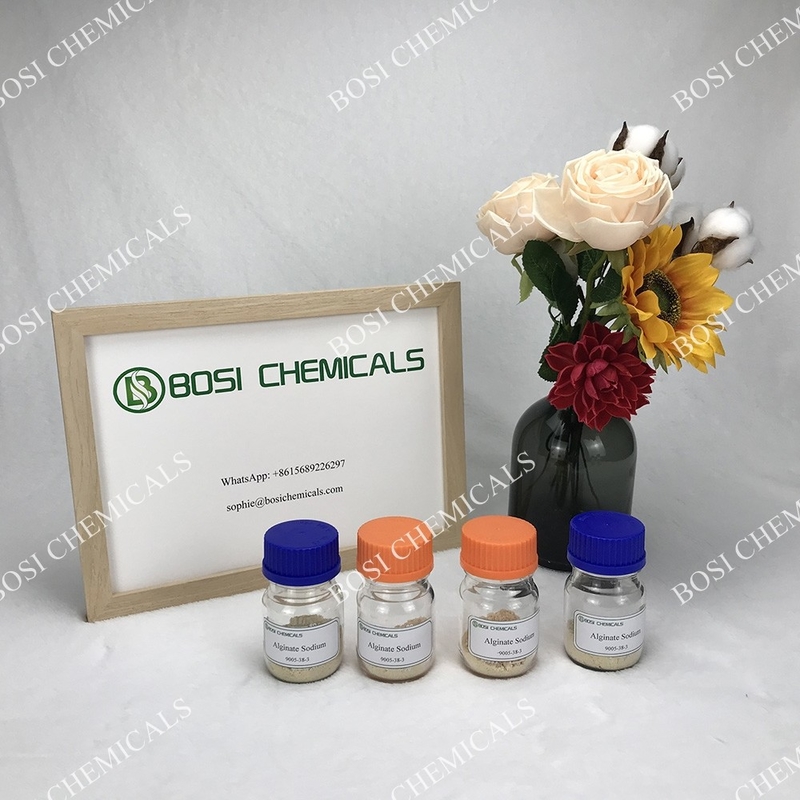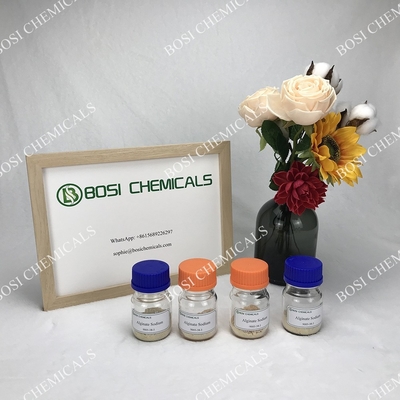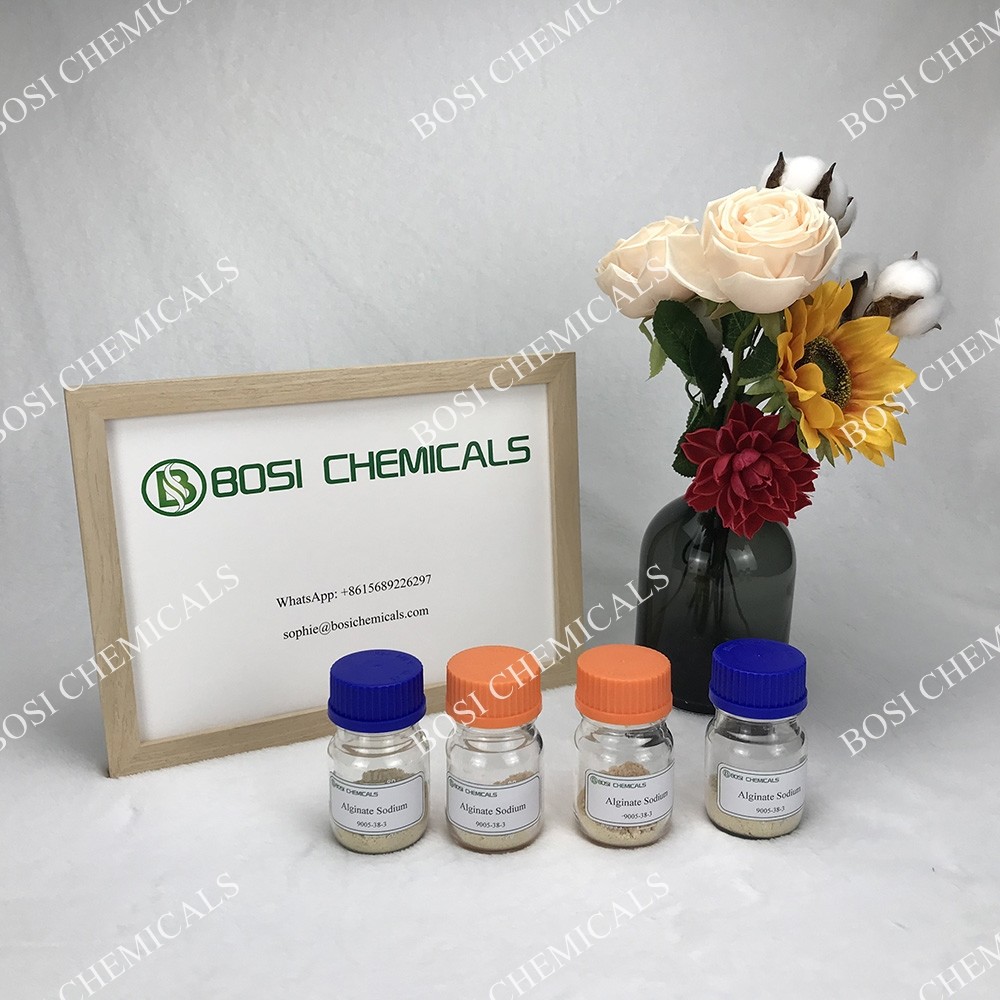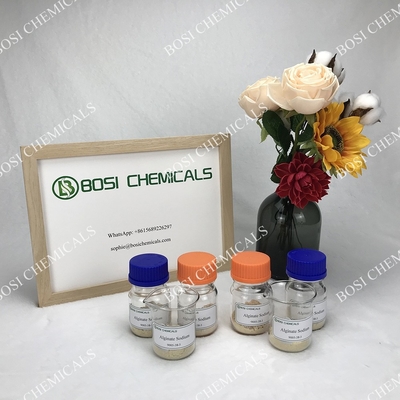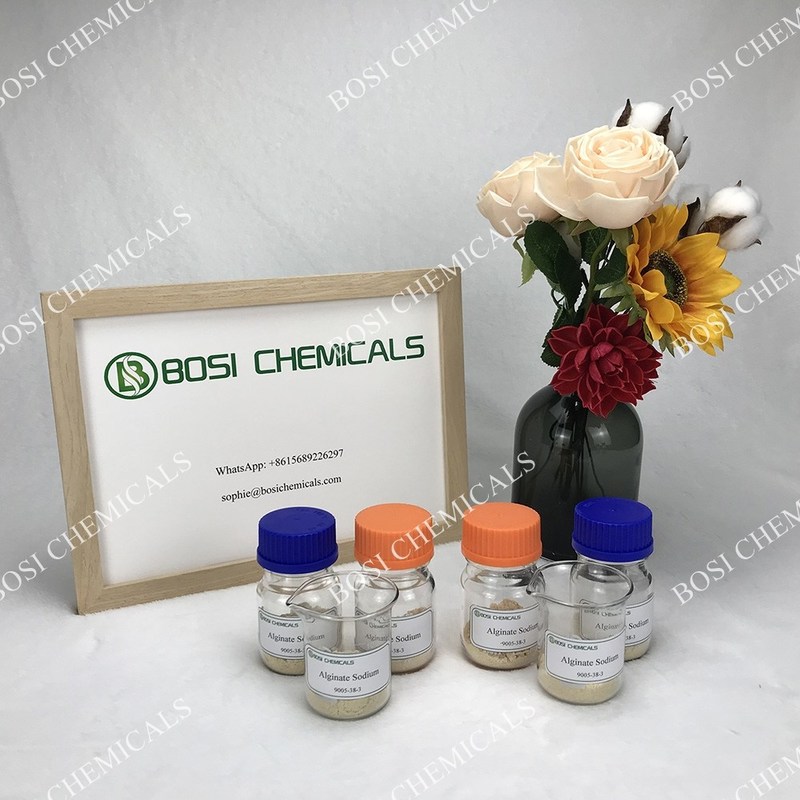Food And Health Grade Intermediates Pharma Named Alginate Sodium
Alginate is used in many foods and biomedical applications, due to its biocompatibility, low toxicity, relatively low cost, and mild gelation. In the food industry, alginate is used as a thickening agent, gelling agent, emulsifier, stabilizer, texture-improver. Nowadays, alginate is added to numerous kinds of food, such as ice cream, jelly, acid milk drinks, dressings, instant noodles, beer, etc. Alginic acid is used in pharmaceutical applications, it is added into tablets as a carrier to accelerate tablet disintegration for a faster release of the medicinal component, in cosmetics due to its functionality as a thickener and moisture retainer. For example, alginate helps retain the color of lipstick on the lip surface by forming a gel-network.
Alginates are refined from brown seaweeds. Throughout the world, many of the Phaeophyceae class brown seaweeds are harvested to be processed and converted into sodium alginate. Sodium alginate is used in many industries including food, animal food, fertilisers, textile printing, and pharmaceuticals. Dental impression material uses alginate as its means of gelling. Food grade alginate is an approved ingredient in processed and manufactured foods.

| ITEM |
CONTENT |
| Alias |
Alginic acid sodium |
| CAS No. |
9005-38-3 |
| Grade |
Health grade |
| Appearance |
Light Brownish/White powder |
| Flavor |
Original Flavor |
| PVI |
0.78-0.95 |
| Function |
Blood System Agents |
| Dye |
Textile Reactive Dyes Chemical |

"Alginate" is the term usually used for the salts of alginic acid, but it can also refer to all the derivatives of alginic acid and alginic acid itself; in some publications the term "algin" is used instead of alginate. Alginate is present in the cell walls of brown algae as the calcium, magnesium and sodium salts of alginic acid. The goal of the extraction process is to obtain dry, powdered, sodium alginate. The calcium and magnesium salts do not dissolve in water; the sodium salt does. The rationale behind the extraction of alginate from the seaweed is to convert all the alginate salts to the sodium salt, dissolve this in water, and remove the seaweed residue by filtration. The alginate must then be recovered from the aqueous solution. The solution is very dilute and evaporation of the water is not economic. There are two different ways of recovering the alginate.
Sodium alginate is used as a gel in pharmaceutical preparations. Sodium Alginate (E401) is extracted from brown seaweed. It is also used as a stabilizer, thickener and emulsifier for food products such as ice cream, yogurt, cream, and cheese. It is a cold gelling agent that needs no heat to gel.

 Your message must be between 20-3,000 characters!
Your message must be between 20-3,000 characters! Please check your E-mail!
Please check your E-mail!  Your message must be between 20-3,000 characters!
Your message must be between 20-3,000 characters! Please check your E-mail!
Please check your E-mail! 

